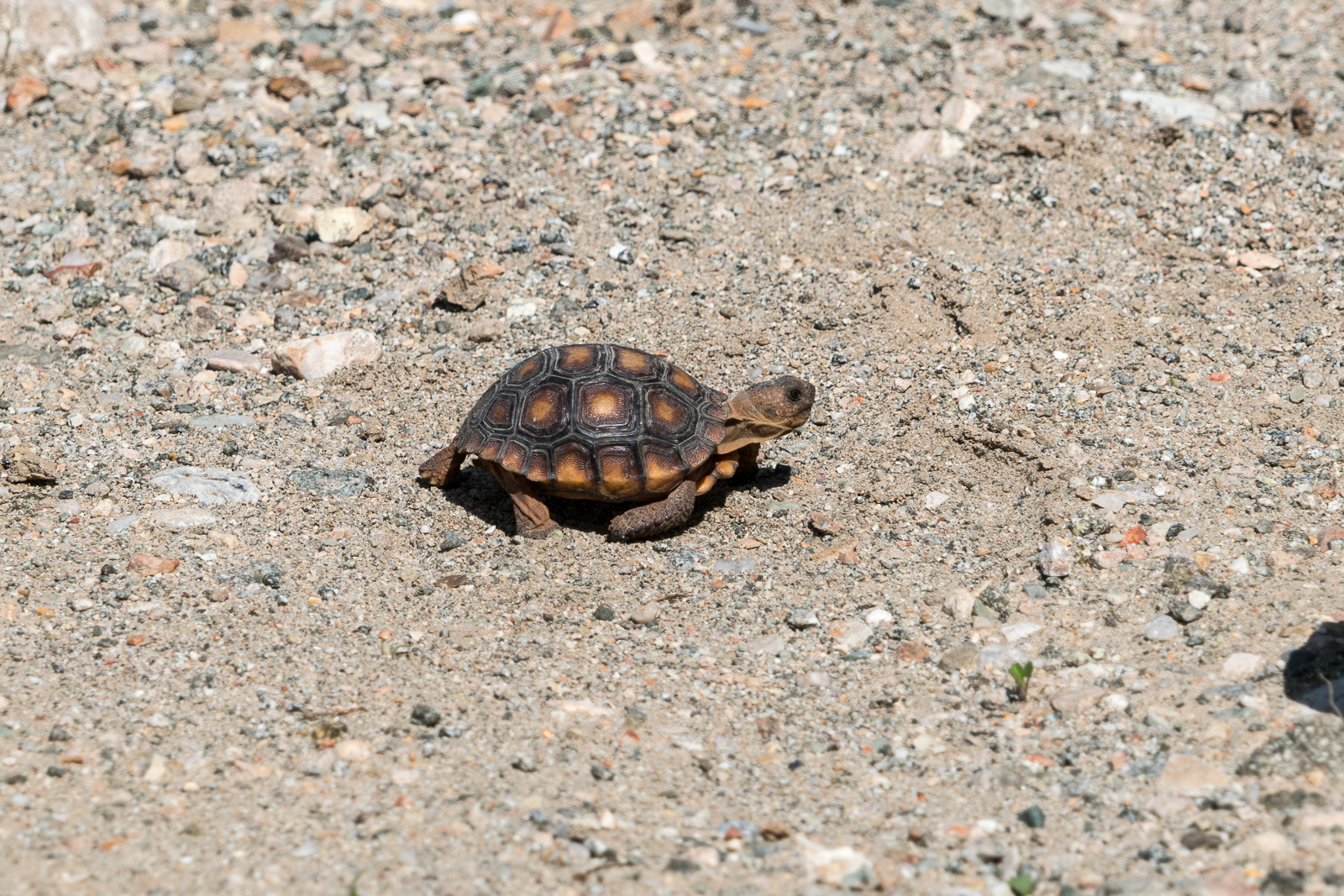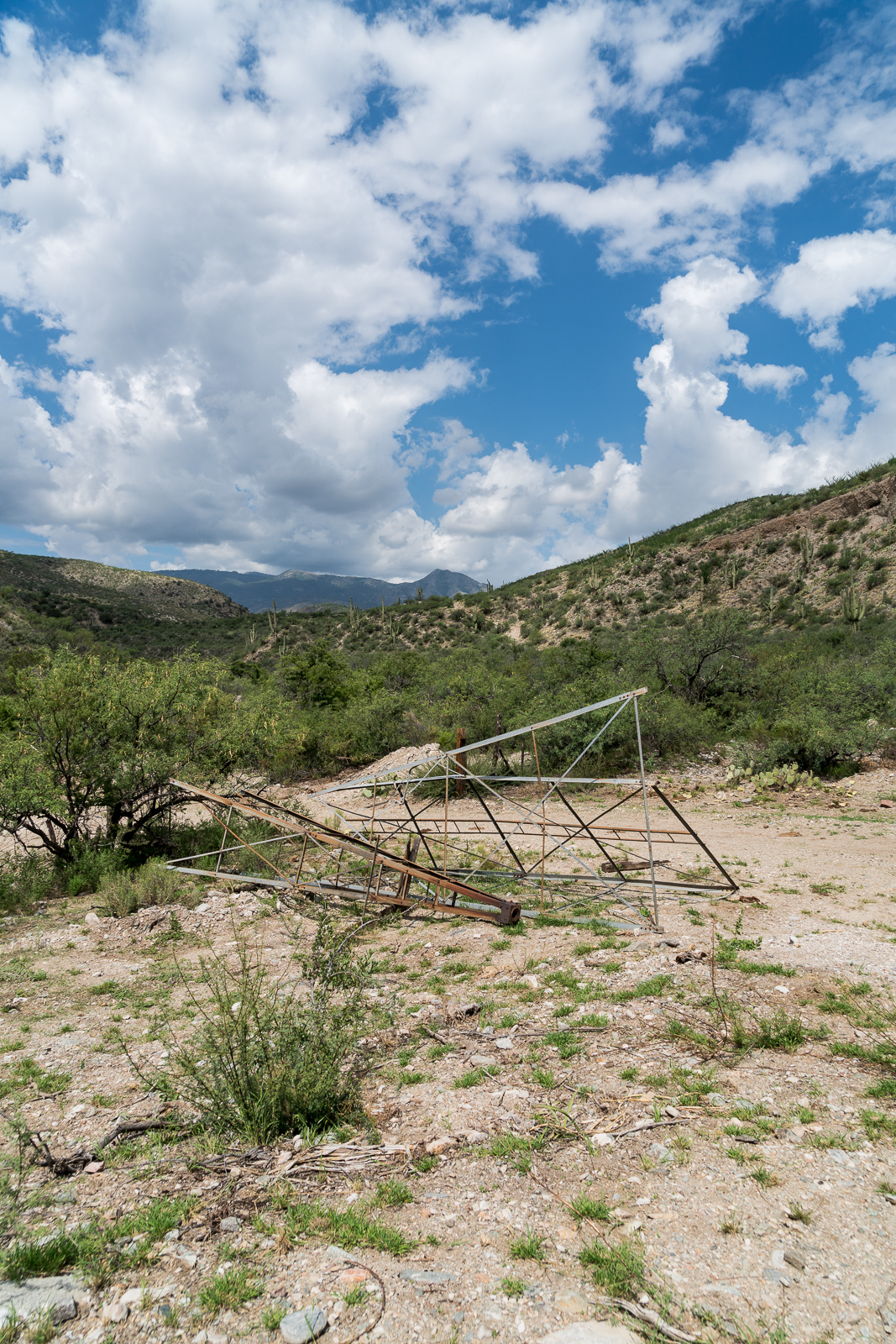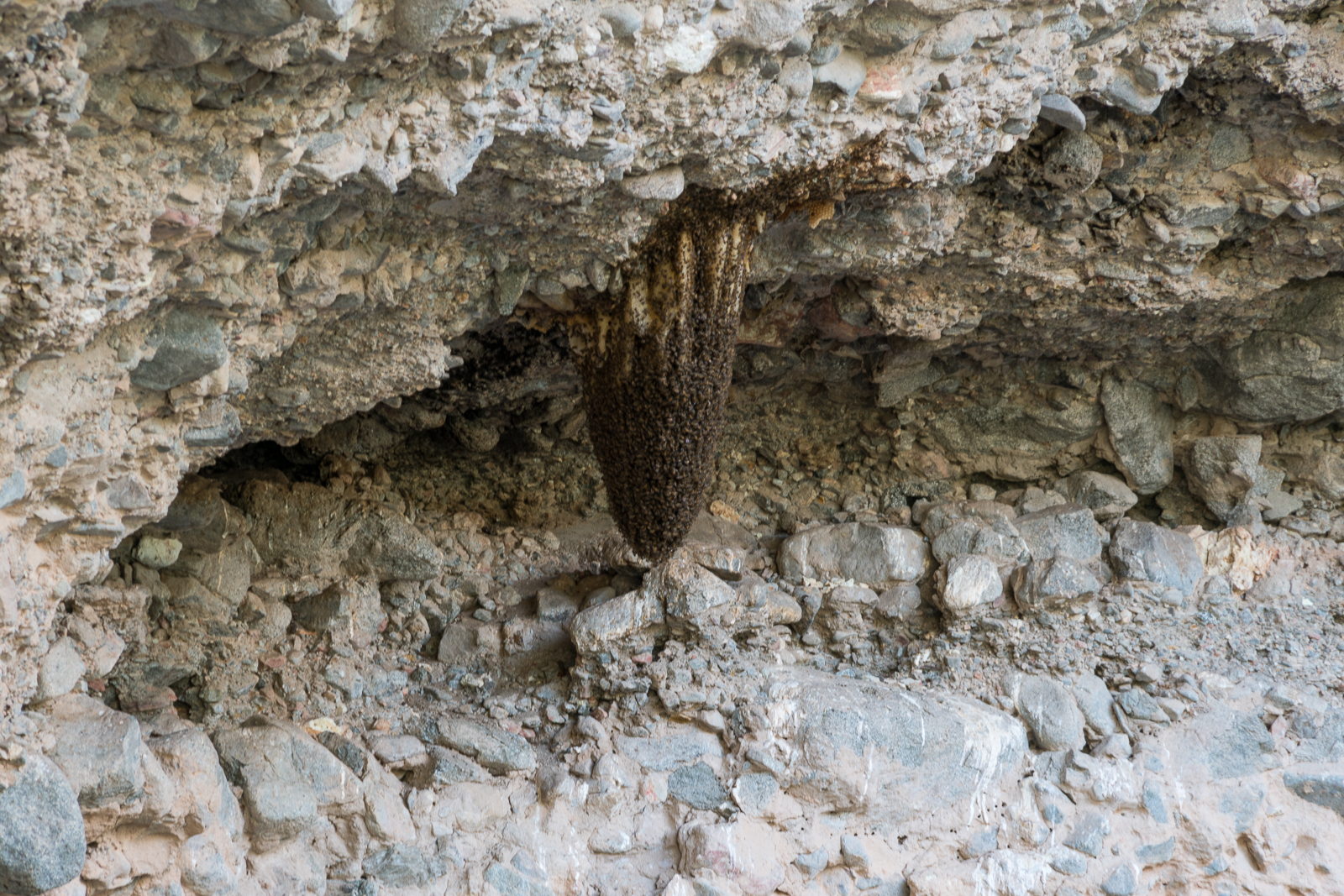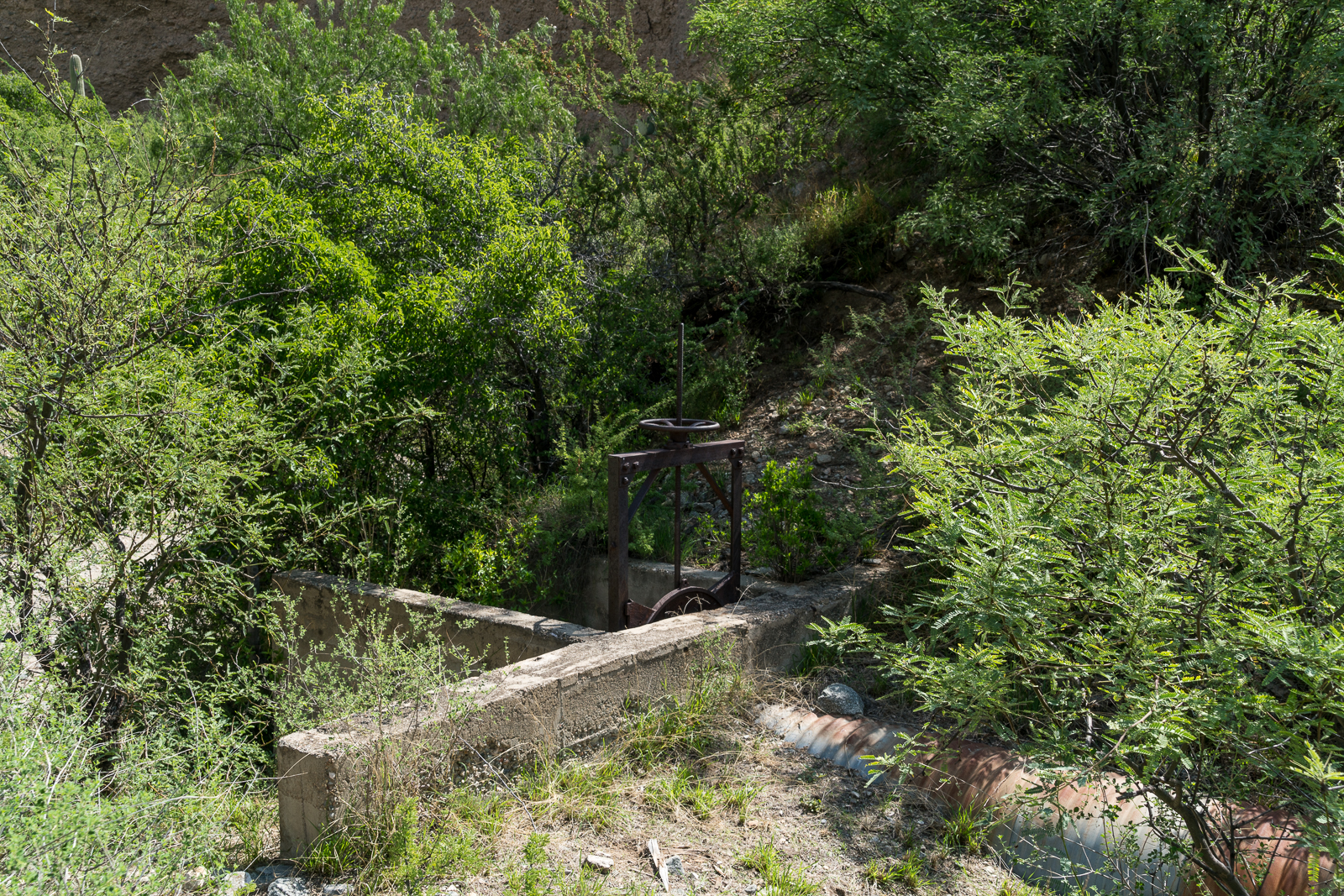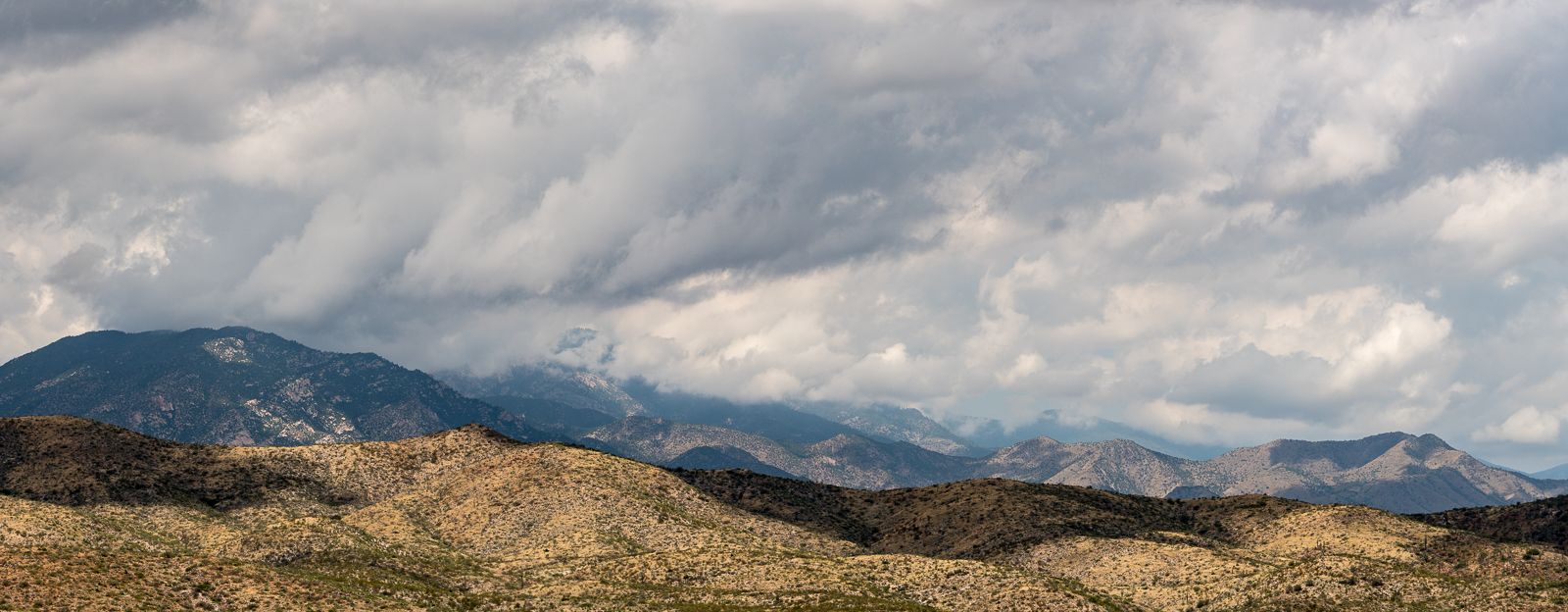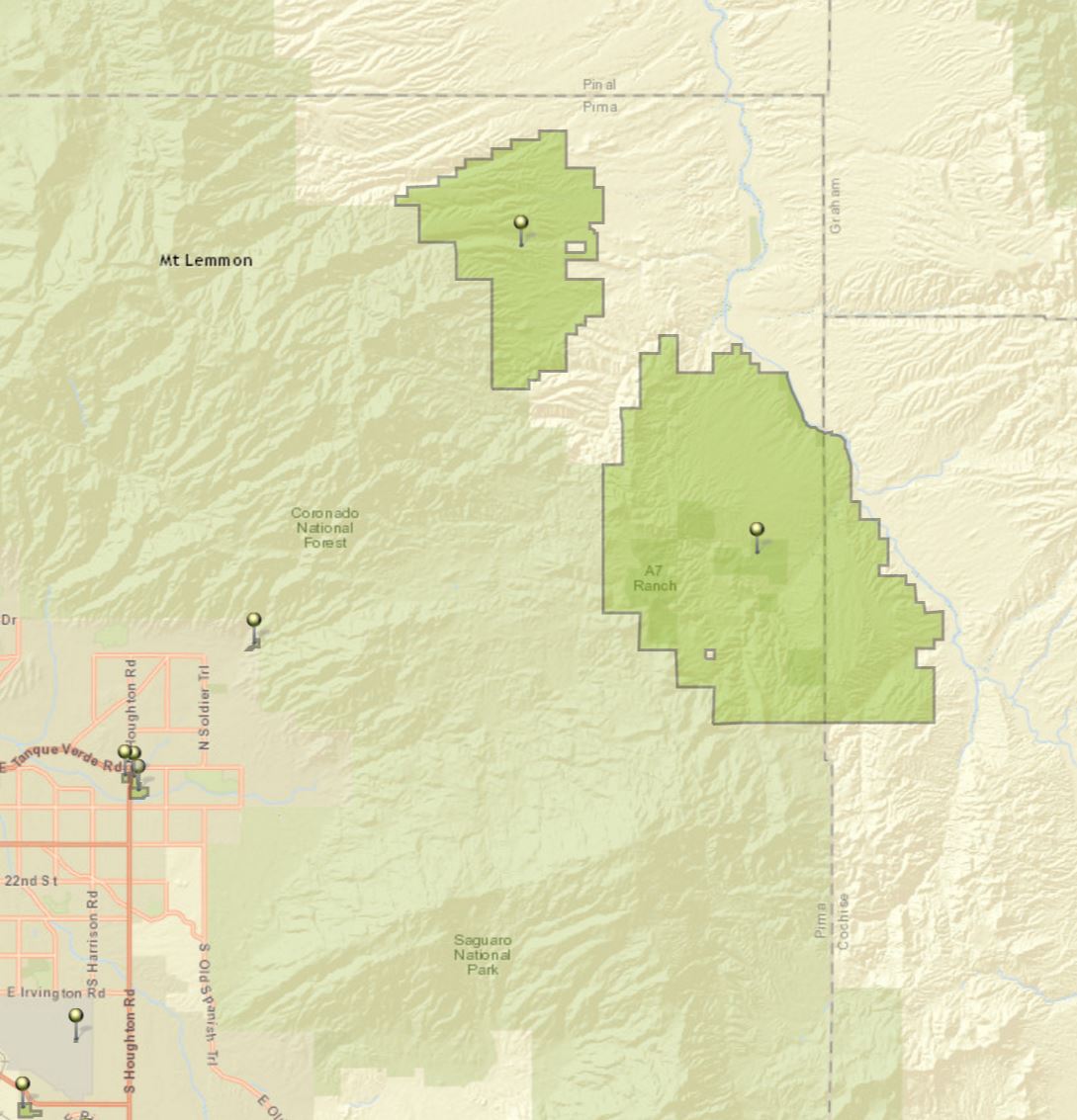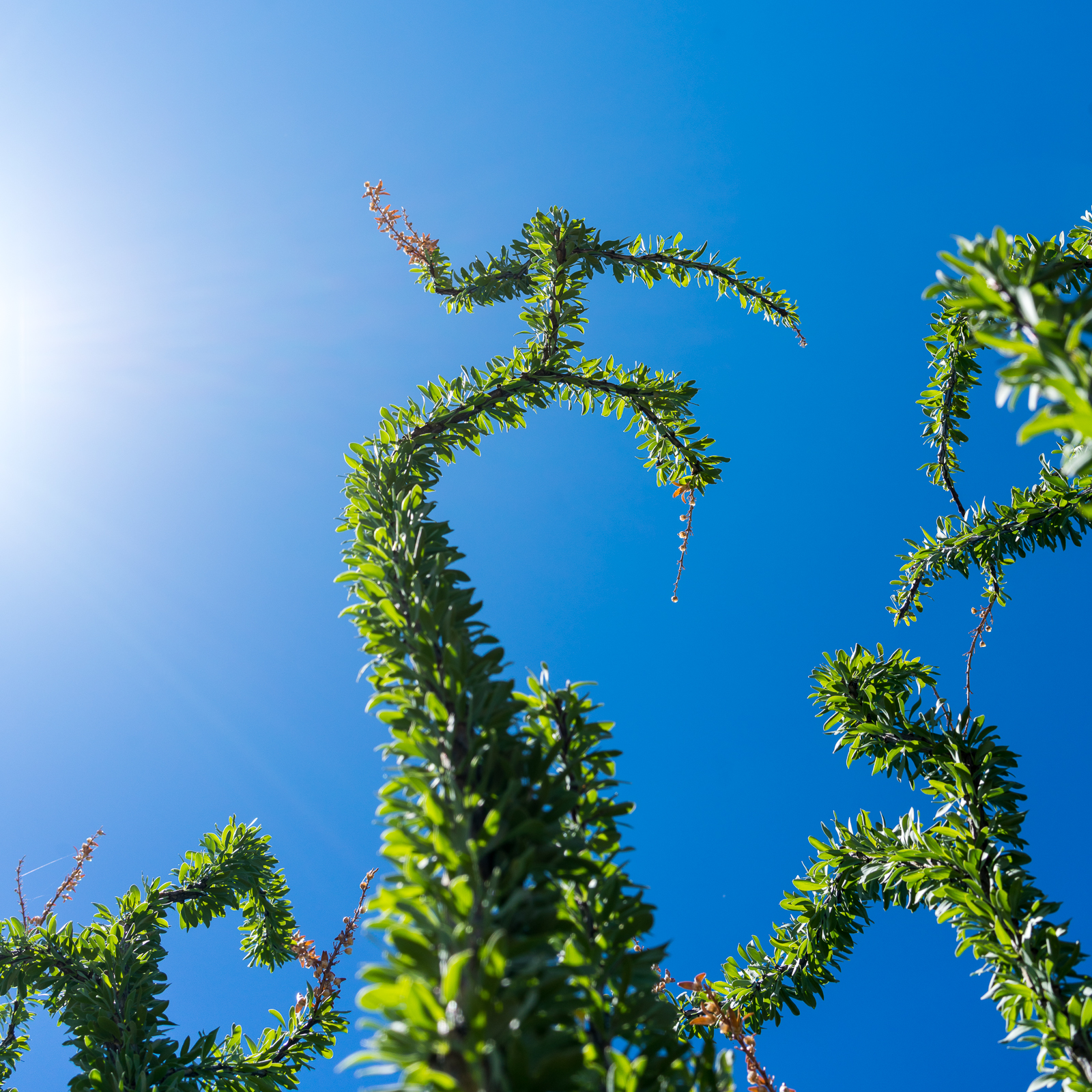
Pink Tank is one of the seemingly infinite number of named tanks scattered across Southern Arizona – I am not sure why so many have names, perhaps because the water they – sometimes – hold is so important? Or maybe just because the effort to build a tank in, essentially, the middle of nowhere takes enough effort that someone wanted it remembered?
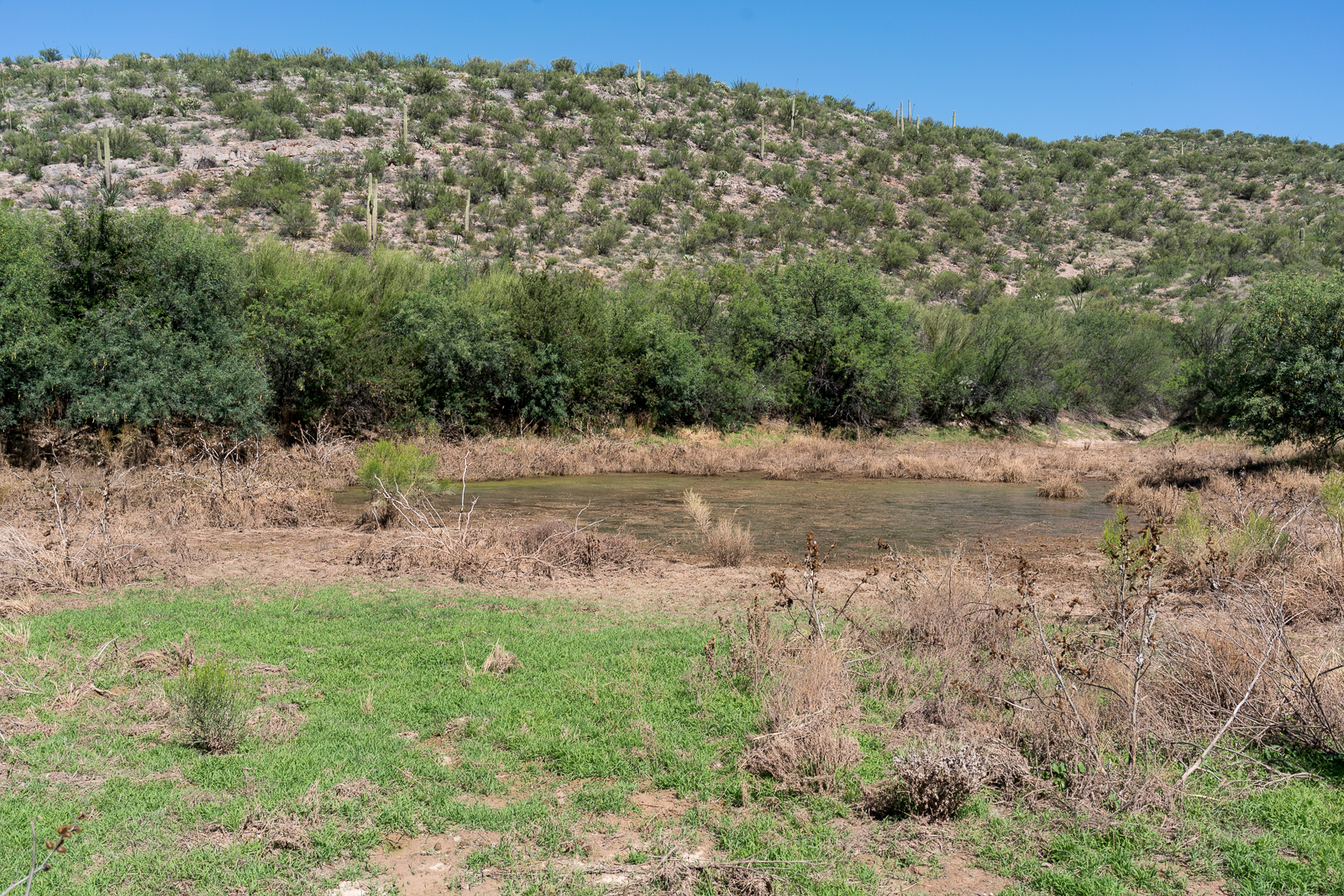
An old road splits from FR4407 and leads out to a flat area above the tank – there is an obvious fire ring, but it doesn’t look frequently used. Pink Tank is holding more water than I expected and the green grass is a slight surprise – as is the generous amount of deep soft mud around the tank and under the grass. It is the middle of a hot day so I don’t stay long before making the short hike back.

I assume these tanks will be a visible part of the landscape for many many years – I wonder if there is a future where water concerns and ranches are distant memories and someone will try to match the locations of tanks to patterns – constellations, Arizona cities, position of solar and lunar events – assuming there must a greater purpose – something more than a more water and more cattle – behind the decision to spend time and effort creating endless tanks across the desert.
